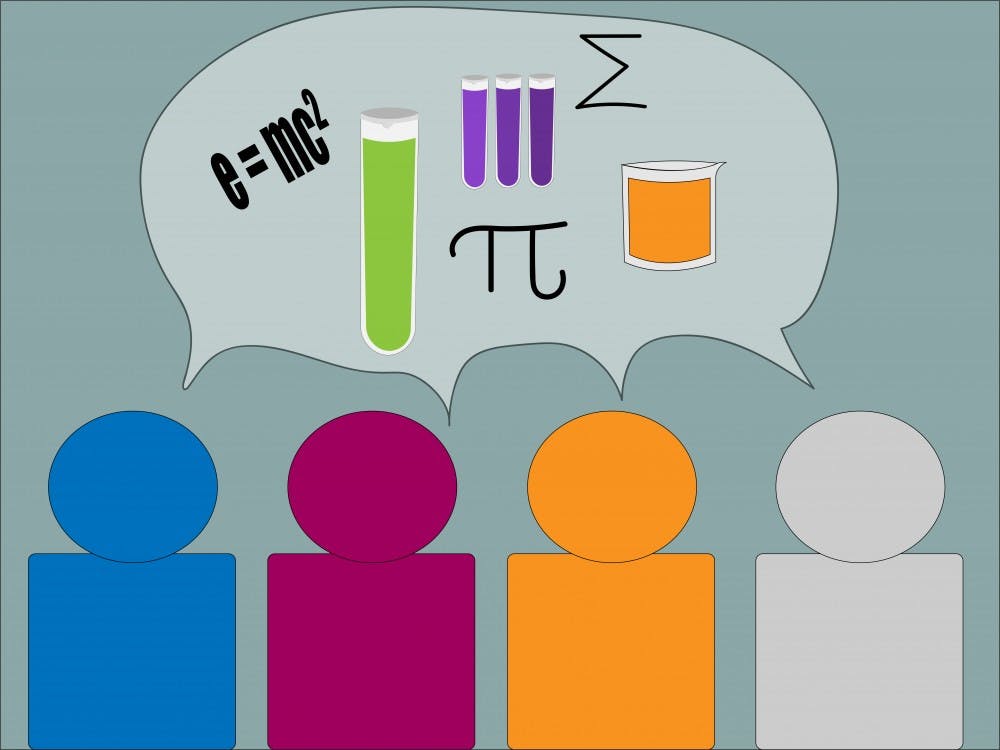In the shifting landscape of higher education, critical questions continue to be raised about the value of a liberal arts degree.
ASU boasts a variety of liberal arts degrees — from anthropology to communications, allowing students to study the humanities and arts in different forms.
Over the course of the past decade, more and more students have been pushed to pursue STEM subjects —science, technology, engineering and math — which are believed to be far more valuable in today’s technology-based economy and culture than a traditional liberal arts major such as philosophy or history.
But the push to pursue STEM-related fields is not new to students from ethnic backgrounds. Many students who are people of color and from personal experience, Asian descent, are discouraged from going into the arts and humanities.
The pressure to go into STEM fields is unrelenting. Many first-generation college students with families to support, are taught from a young age that education is the path towards job security and financial stability, and careers in the STEM field guarantee both those aspects.
One in 20 jobs are projected to be STEM-related by the year 2018 and the National Science Foundation estimates that 80 percent of jobs available for future individuals will require math and science skills.
STEM majors with a bachelors degree alone also earn on average $15,500 more than non-STEM majors.
Many PoC students come from families who immigrated to the U.S. to make better lives for themselves and for their children and to seek greater economic opportunity. Those immigrant parents often face language or opportunity barriers that prevent them from pursuing financially stable jobs.
In turn, they often persuade their own children to pursue STEM related fields to prevent them from experiencing the same precarious financial burdens they had to face.
While these are well-intentioned concerns, there are also some unintended consequences.
However, it's important to remember that first-generation students of color are not the only ones placed in this difficult position.
Students who want to major in the arts or humanities, or want to be writers, artists or actors are often discouraged from pursuing their passions because it is perceived that they are less prestigious with less economic opportunity.
They are also discouraged from pursuing non-STEM careers because there is a negative stigma against those who study the arts and humanities. Many believe that a degree in liberal arts or humanities is a wasted piece of paper offering graduates little opportunity to positively impact society.
This could not be further from the truth.
There are strengths and advantages that a degree in fields such as history, political science and the arts garner and it’s important not to undermine these areas of study.
Humanities majors encourage analysis, critical thinking and a vast knowledge of various topics. These majors look deeper into various texts that affect media, culture, society, literature and politics.
Steven P. Lurenz, a professor of history at Mesa Community College, believes that studying the humanities can help us better understand each other.
"Studying the arts and humanities can help us better understand and appreciate others through their languages, cultures and literature," Lurenz said. "We can learn how to reason and how to think creatively and we must focus on that in order to advance our society."
So next time you watch a great film, or read a particularly moving piece of literature, remember that they came into fruition thanks to the studies of the humanities and arts.
If our country focuses only on its status as a technologically advanced nation, our culture and society will follow.
We need to remember that STEM and humanities are not mutually exclusive — they are stronger together and their collaboration can help drive innovation and creativity in all students.
Instead of looking down upon students who choose to major in the arts and humanities and pitting them against STEM, we should change how we think and approach these topics and realize that the combination of these two fields together could help bolster critical thinking and communication skills for future students.
Reach the columnist at ymian@asu.edu or follow @yasminemian on Twitter.
Editor’s note: The opinions presented in this column are the author’s and do not imply any endorsement from The State Press or its editors.
Want to join the conversation? Send an email to opiniondesk.statepress@gmail.com. Keep letters under 500 words and be sure to include your university affiliation. Anonymity will not be granted.
Like The State Press on Facebook and follow @statepress on Twitter.




